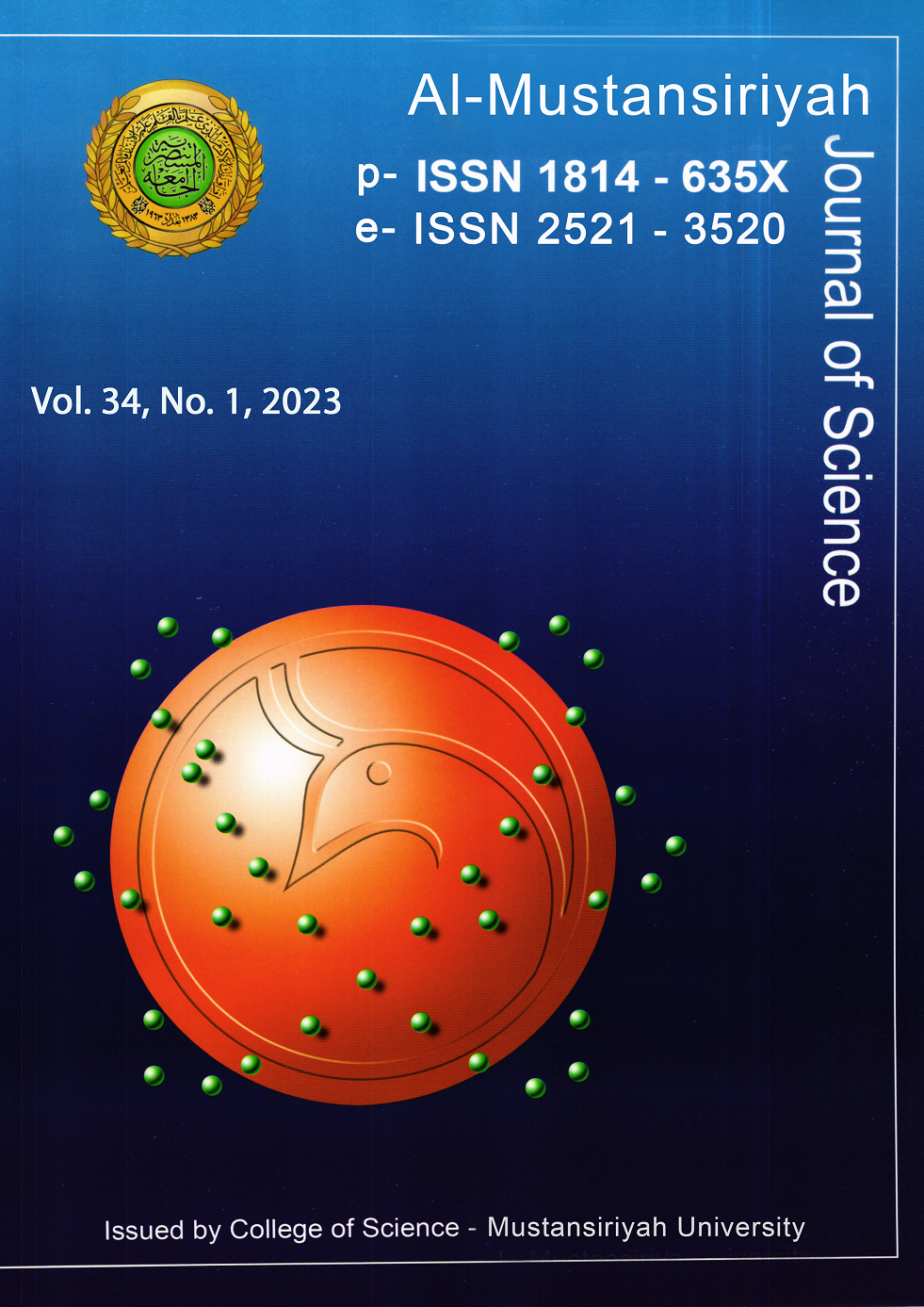Inhibitory Effect of Verjuice Against Some Dental Decay Bacterial Species
DOI:
https://doi.org/10.23851/mjs.v34i1.1134Keywords:
tooth decay, antibiotics, bacteria.Abstract
People in most countries suffer from tooth decay due to various reasons, and the germs responsible for tooth decay show an increase in resistance towards standard antibiotics used in treatment because of the inappropriate and indiscriminate use of these antibiotics. This study aimed to search for natural products that have fewer side effects and are more effective for treatment. Natural verjuice was used to study its effectiveness against some bacterial species including Escherichia coli, Streptococcus mutans, Staphylococcus aureus, and Pseudomonas aeruginosa that cause caries, which were obtained from the Microbiology Research Laboratory in a previous study. The results showed the superiority of the effectiveness of verjuice over the effectiveness of most of the selected antibiotics against the studied bacteria, which confirms its effectiveness as a natural product without the need to extract the active substances with organic solvents.
Downloads
References
B. Islam, S.N. Khan, & A. U. Khan, Dental caries: from infection to prevention. Medical Science Monitor, 2007, 13(11), pp RA196-RA203.
P. D. Marsh, Dental plaque as a biofilm: the significance of pH in health and caries. Compendium of continuing education in dentistry (Jamesburg, NJ: 1995), 2009, 30(2), 76.
J. M. Tanzer, J. Livingston, & A.M. Thompson, The microbiology of primary dental caries in humans. Journal of dental education, 2001,65(10), pp.1028-1037.
https://doi.org/10.1002/j.0022-0337.2001.65.10.tb03446.x
PMid:11699974
L. Samaranayake, "Essential Microbiology for Dentistry". 3rd ed. n Churchill. Livingstone. Elsevier, (2006).
A.H. Rogers. Molecular Oral Microbiology. Caister Academic Press. ISBN 978-1-904455-24-0 (2008).
V. Georgiev, A. Ananga, & V.Tsolova, Recent advances and uses of grape flavonoids as nutraceuticals. Nutrients, 2014, 6(1), pp.391-415.
https://doi.org/10.3390/nu6010391
PMid:24451310 PMCid:PMC3916869
S., Al-Majeed, J. Al-Nahafi, & Daoud D. Abdullah. The effect of adding different levels of foaming sulfur on some chemical soil properties in grape orchards. Iraqi Journal of Agricultural Sciences, 2005,36 (6), pp 23-29.
A. C. Hulme, The Biochemistry of Fruit and Their Products. N. Y. Academic Press. USA, pp 788,1971.
R. A., Kadhum, Effect of Pruning Severity on The Growth and Yield Quantity and Quality of Two Grape Cultivars. Iraqi Journal of Agricultural Sciences, 2009, 40(4), pp. 1-8.
L., Jahodar, Plants with hypoglycemic effects.Gesk farm, 1993, 42(6):pp. 251-259.
M. I, Okeke, A.S. Okoli, E.N. Eze, G. C Ekwume, E.U. Okosa, E& C.U. Iroegbu, Antibacterial activity of Citrus limonum fruit juice extract. Pak Journal Pharm Sci, 2015, 28(5), pp 1567-1571.
Al-Hamid, Al-Duwaihi Heba, The antibacterial activity of Bacillus subtilis isolated from the soil of the city of Aleppo against some pathogenic bacteria. Master's thesis, Faculty of Science, Aleppo University, 2016, Syria.
Downloads
Key Dates
Published
Issue
Section
License
Copyright (c) 2023 Al-Mustansiriyah Journal of Science

This work is licensed under a Creative Commons Attribution-NonCommercial 4.0 International License.
(Starting May 5, 2024) Authors retain copyright and grant the journal right of first publication with the work simultaneously licensed under a Creative Commons Attribution (CC-BY) 4.0 License that allows others to share the work with an acknowledgement of the work’s authorship and initial publication in this journal.






















